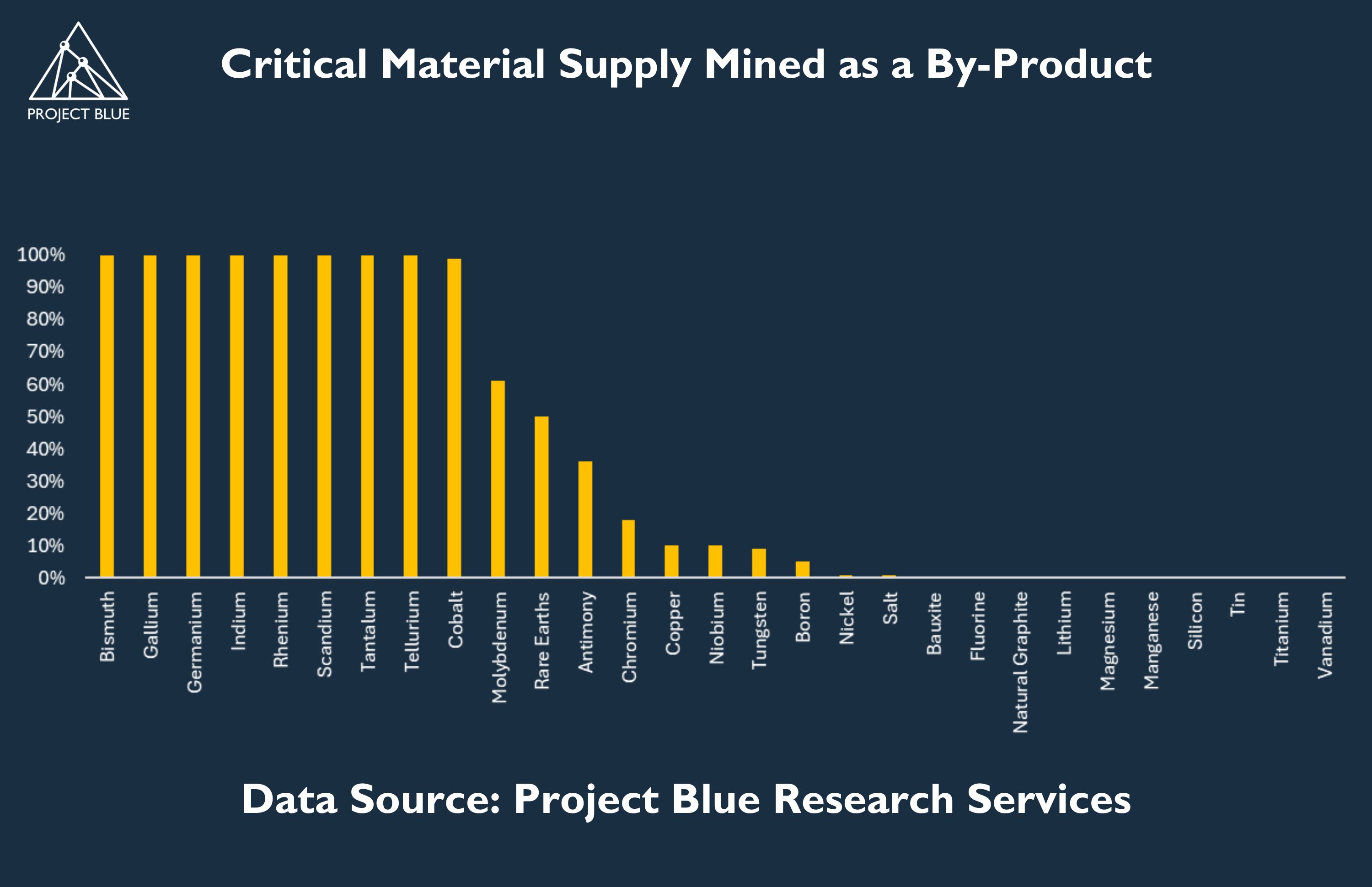The Economics of By-Products
Opinion Pieces

17
Mar
2025
The Economics of By-Products
Critical materials are in a period of great uncertainty when it comes to trade barriers and retaliatory actions around the world, and there are not enough scenarios anyone can model right now to get a high degree of comfort.
Naturally, on some of our projects with clients, we have had to reframe the way to think about critical materials, and one way is thinking about the economics of by-products.
For many companies, by-products are viewed as a sort of bonus revenue line, and they often aren't even reported in production results.
We took a look across our coverage universe and note that about 1/3 of the critical material markets that Project Blue covers are entirely supplied as a by-product.
These are materials that are critical to industries like semiconductors, aerospace and electronics. And in some cases, China has or is in the process of implementing export restrictions.
So the question we've been getting at Project Blue is whether the critical nature of these materials is enough to hedge, or possibly even enhance, a business?
We've been getting this question from businesses who are looking to invest in either building recovery circuits or potentially waste processing or greenfield projects where a critical material is a by-product.
In some of these situations, in previous technical studies, by-products were not thoroughly considered because it was a different time to the world that we're living in today.
The honest answer to these questions is, of course, “it depends”.
What we've been doing is looking at the supply chains for these materials:
- We're determining who the buyers are, and how well integrated they are in their supply chain
- Do they potentially need alternate sources of supply, particularly if it's been impacted by China's export restrictions?
And this goes beyond just raw materials - this is also processing technology that is being restricted. So we have to consider whether those potential customers who may have been relying on China's expertise will be able to expand or ramp up as expected.
We also look into what products are customers buying because you know, for some of these materials they can be produced and sold at various levels of refinement. So this is where quite a bit of the due diligence that we're working on has been focused.
We also, of course, consider the primary product of the assets and the competitiveness from a cost or margin curve perspective. And ultimately it depends on which stakeholders matter.
So clients are coming to us with different stakeholders in mind. Sometimes it's commercial lenders, it might be an ECA, could be equity investors or perhaps another group entirely with a different mandate.
Because each of them will view the sales strategy and economics of these by-products differently. Is it a hedge or is it upside? Is it core or non-core? Is it real or aspirational?
For the first time in over half a century, critical materials are being discussed at the highest levels of government.
So these are important discussions to be having and we're pleased that Project Blue can support.
This is a transcript from a video where Jessica shares her thoughts - you can watch the video here.